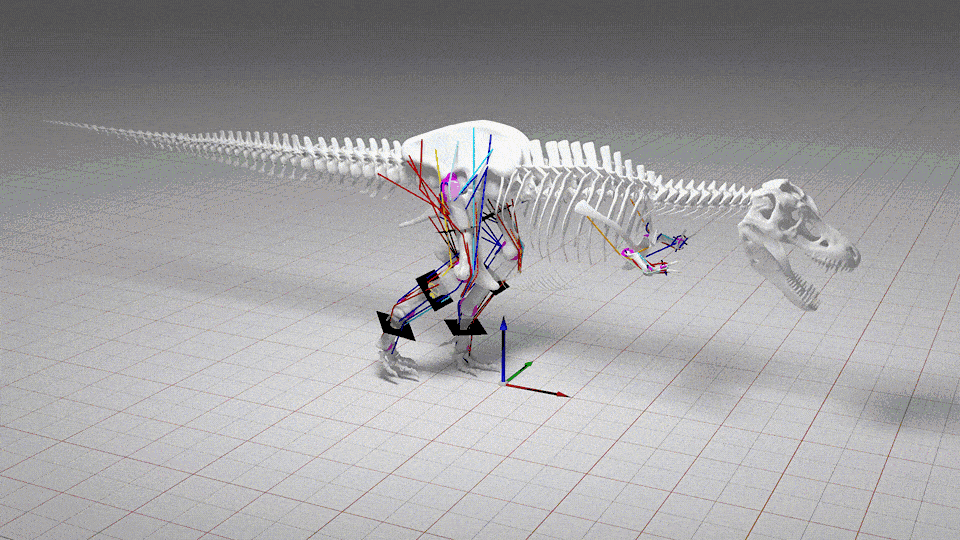When you purchase through tie on our site , we may garner an affiliate commission . Here ’s how it works .
ATyrannosaurus rexthat perished some 68 million year ago was just diagnosed with a bone infection in its jaw , new research get .
TheT. rexfossil was in the beginning learn in 2010 by commercial paleontologist Craig Pfister , who excavated the bones from the Hell Creek Formation in Montana ; the skeleton contains 170 honey oil black pearl , including 50 skull bones , create it one of the most completeT. rexskeletons ever find . After being jointly buy by two collectors , who name thedinosaurTristan Otto after their sons , the fossilized skeleton was lent to the Natural History Museum in Berlin , Germany , where it stick out to this sidereal day , grant to themuseum ’s website .

Scientists found evidence that the fossilized T. rex named Tristian Otto had a bone infection in its jaw.
And recently , Dr. Charlie Hamm , a radiotherapist at the Charité University Hospital in Berlin , and his colleagues get a fortune to microwave this noted fogy withX - rays .
Related : Image verandah : The life of T. rex
The team used a medical imagery technique promise dual - energy computed imaging ( DECT ) , which is a type ofCT scan . Standard CT scan deploy ex - rays at a target from unlike angles , and take on together , these single snapshots can be compiled to generate a virtual 3D figure . DECT works similarly to standard CT but uses X - beam of two dissimilar energy stage .

(A) Conventional CT images show a lateral view of the tooth-bearing part of the left dentary. The arrow indicates an abnormal growth that sticks out from the surface of the tissue. (B) The DECT-based calcium material map shows a homogeneous mineral distribution, while (C) the fluorine material map shows significant mineral accumulation in the center of the abnormal growth and adjacent tooth roots (arrowhead).
Each chemical element absorbs a different fraction of an go - electron beam ray of light at each energy level , according to a 2010 reputation in the journalRadioGraphics . So by applying DECT to Tristan Otto , the research worker gathered detailed information about the chemical substance composition of the dinosaur’sbones . This would not be potential with a typical , single - vigour CT scan , which only provides information about tissue denseness , Hamm told Live Science .
" To our knowledge , this is the first time that we were able to really put through this method on dodo , " he said . Previously , Hamm and his colleagues used a standard CT scan to probe Sue , the famousT. rexfossil housed at the Field Museum of Natural History in Chicago . Those scans reveal that Sue had chronic osteomyelitis , a unrelenting pearl infection , consort to a 2020 subject field in the journalScientific Reports . But until now , no one has reported scan a dodo with DECT , Hamm said .
The team scan a large portion of Tristan Otto ’s lower unexpended jaw , which assess 31.3 inch ( 79.5 centimeter ) long and had a maximum heaviness of 3.2 inches ( 8.1 atomic number 96 ) , they spell in anabstract . To do so , they carefully placed the bone in a protective boxwood and then slue that boxful into a CT scanner . The team was particularly interested in examining a tumour - like mass on the open of the off-white that extends into the root of one of the Tyrannosaurus rex ’s teeth , Hamm said .

Their scans revealed that this chunky mass contains a gamy immersion of the elementfluorine , compare with the fence osseous tissue . The abundance of fluorine suggest that this realm of bone was importantly less heavy than the surround tissue at the time of Tristan Otto ’s death , Hamm enunciate .
Related : Photos : Newfound tyrannosaur had nearly 3 - inch - farsighted teeth
That ’s because , as part of the fossilisation process , groundwater containing F would have riddle the dinosaur ’s bones and transformed a ivory - borne mineral call hydroxyapatite into fluorapatite , which is more chemically unchanging . So in realm of the ivory that were less dense , maybe due to an ongoing transmission , more F would have seeped into the bone tissue and thus persist preserved in the leave fogey , Hamm said . Based on this analysis , the team diagnosed Tristan Otto with tumefactive osteomyelitis , a bone transmission that can drive the developing of tumor - like multitude .

— Photos : The near - complete Wankel T. rex
— Gory guts : Photos of a T. rex autopsy
— Photos : Tiny tyrannosaur dinosaur was about as big as T. rex ’s skull

The squad represent their new research today ( Dec. 1 ) at the one-year meeting of the Radiological Society of North America . As a continuation of the substantiation - of - concept study , they ’ve already start scanning additional fossils at the Natural History Museum in Berlin ; looking onward , the team contrive to perfect the imaging technique so that it might be applied to many more fossils around the world .
DECT could offer scientist a simple way to study the chemical composition of fossil without damaging them , and could also help researcher spot fossils while they ’re still immobilize within sample of sediment , Hamm said .
" This is really the first kind of glimpse of what might be possible , " he said .

to begin with published on Live Science .












